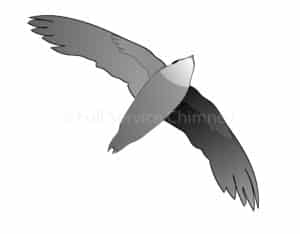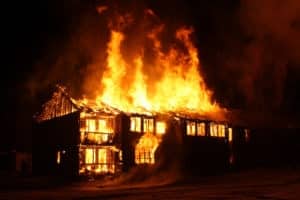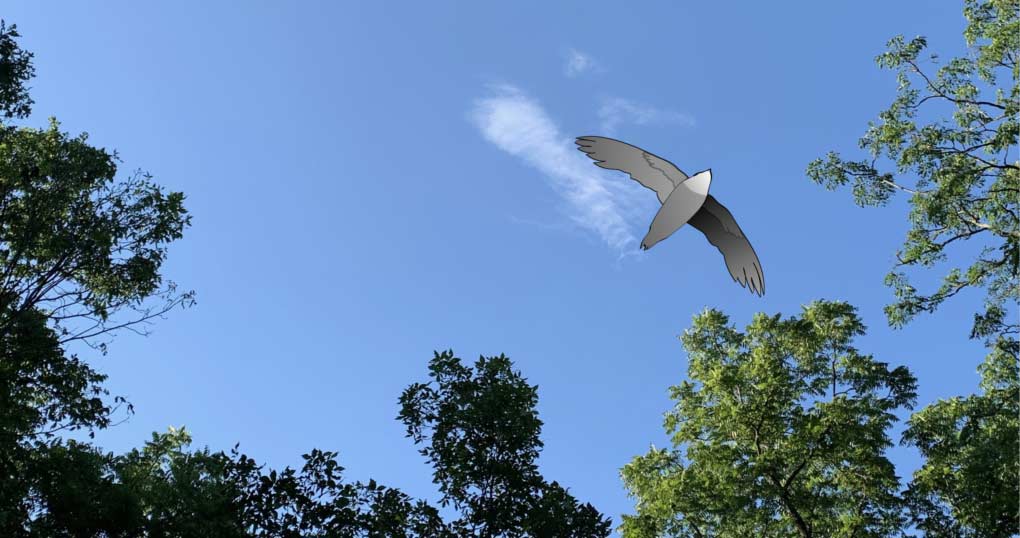By Robert Berry, MCS#47
Birds in chimneys have, and will always be part of a chimney sweep’s experience. For a midwestern chimney sweep, bird issues start in early spring. Every year, it seems bird removal from chimneys becomes a hot ticket item overnight! The phones ring off the hook throughout summer calling about birds in the chimney. The one thing most callers have in common is not having a chimney cap to prevent birds getting stuck in the chimney flue.
At Full Service Chimney, calls for Bird Removal in Kansas City Chimneys are an Annual Request. If you need assistance, call us at 913-642-6171 today.
All types of animals find their way into a chimney flue, but the most common bird in fireplaces is the Chimney Swift. These birds were nesting in the Americas long before European settlers had chimneys. Homeowners woke to the unique rhythmic bird calls of the Chimney Swift, often made by the young needing the mothers’ attention. While it can be unnerving having an animal in the home, both homeowners and chimney sweeps have a unique responsibility to the Chimney Swift.
Chimney Sweeps Protect Homes & Chimney Swifts Alike
Chimney Swifts have been called the Chimney Sweep Bird and coincidentally are the color of soot! Often only seen in flight, with a cigar-shaped body. Their flight is somewhat erratic due to their nimble acrobatic skills. Since they feed on flying insects, overall these birds in chimneys do more good than harm.

Long before Chimney Swifts had chimneys to nest in, they built their twig and saliva nest in cliffs, caves and hollow trees. When Chimneys started doting the landscape, it was natural for them to adapt and enjoy this temporary home during the time of year there were no fires in the fireplace. That’s how chimney sweep bird removal jobs began.
Chimney Sweeps Get to See What No One Else Does
A limitation to the Chimney Swifts mobility is that they never land on horizontal surfaces, rather they are quite at home clinging to the side of a cliff, tree, or inside the fireplace flue liner of your chimney!
Once the birds’ nest in a chimney is made, and eggs are laid, the chimney swift waits for the chicks to hatch. Like their human counterparts, baby swifts need to be fed hourly. So, off the parent goes catching mosquitoes, and returning back to the nest in the chimney to deposit the food into squawking beaks. Chimney sweeps routinely service chimneys without cap protection and always look to see if the Bird Hotel (aka chimney flue) has occupants.
If birds are nesting in your chimney and already raising a family, then the chimney sweep must wait until the guests leave and the nest is abandoned. Sweeps know that as migratory birds, the Chimney Swift is protected by Federal Law and they will leave naturally as soon as the weather begins to get cooler.
How to Get Birds Out of Chimney
If a nest and brood haven’t developed yet, chances are the parent Chimney Swift is still in search mode, looking for prime nesting real estate. If you discover birds lurking around but not yet nesting, simply rattle the damper a few times to encourage the bird to move on.
Once a birds nest in chimney is built, they will not easily choose to leave, and we shouldn’t try to force them out. After all, they’ll be gone in a few months time. Once the migrant birds head south for the winter, a chimney sweep can clean out any debris from the visitor and install a chimney cap with animal and spark protection. An injured swift will become a bird stuck in a chimney, unable to leave or live.

Do NOT try to smoke birds out of your chimney.
Smoke ‘Em Out
Can You Smoke Birds Out of Chimneys? Please don’t.
Cruelty concerns aside, animals develop loyalty to home. Just like people, they won’t leave early. We’ve heard reports of attempts to smoke Chimney Swifts out of chimneys resulting in killing the birds in the chimney. Which can damage the chimney liner when debris inside the flue catches fire.
Worse, if a flue catches fire, it could spread to the home and burn the whole house down.
So, before you decide to smoke ‘em out…. Think twice about the birds and the safety of your family.
When a chimney swift moves from the chimney into the firebox, it’s no longer a flue-bird. Now you’ve got a bird in fireplace problem and should consult a wildlife removal professional for safe, legal and effective removal of the bird from your fireplace.
Chimney Swift Related Content
- Find out what to do about chimney swifts
- Hear sounds a chimney swift makes
- Read the Audobon Field Guide
Other Sources for Chimney Swift Information

